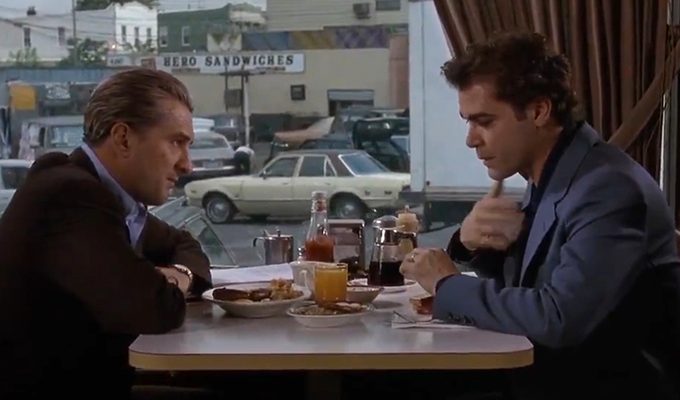 Here’s a bit of movie trivia you might not know. “The Dolly zoom… was invented by cameraman Irmin Roberts to visually convey the feeling of agoraphobia by zooming in with the lens while simultaneously dollying backwards the entire camera… or vice versa.”
Here’s a bit of movie trivia you might not know. “The Dolly zoom… was invented by cameraman Irmin Roberts to visually convey the feeling of agoraphobia by zooming in with the lens while simultaneously dollying backwards the entire camera… or vice versa.”
So prefaces editor and film enthusiast Vashi Nedomansky in his eight and a half minute long supercut, “Evolution of the Dolly Zoom.” In the video, Nedomansky strings together nearly two-dozen examples of the camera technique from classic films, beginning with its famous debut in Alfred Hitchcock’s “Vertigo,” on which Irmin Roberts worked. You can see how effective the technique was at creating a sense of, well, vertigo, as retired detective John ‘Scottie’ Ferguson (James Stewart) chases Madeleine (Kim Novak) up a bell tower. He suffers from an acute fear of heights, which inhibits his ability to follow her. Roberts’ technique is absolutely perfect in its attempt to convey how disabling and disorienting Ferguson’s acrophobia is.
The dolly zoom (aka Vertigo zoom, aka zolly, aka reverse zoom, aka over a dozen other things) next appears noticeably in Truffaut’s 1962 “Jules and Jim.” Nedomansky also highlights its appearance in “Marnie” (Hitchcock reemployed it here in 1964) and in 1967’s “Le Samourai” directed by Jean-Pierre Melville.
Though the push pull (another pseudonym for the shot) was used effectively in those and other examples yet to come, unarguably one of the best deployments of it come in Steven Spielberg’s “Jaws.” You know the scene I’m talking about. Brody (Roy Scheider) is sitting on the beach, keeping an eye on things, when his greatest nightmare becomes reality. (Nedomansky showcases Spielberg twice, featuring “E.T. The Extra-Terrestrial,” as well.)
Martin Scorsese has also made use of the smash shot on a number of occasions. We can see examples of it from both “Raging Bull” and “Goodfellas” in the supercut. Apparently, it’s a go to for gangster films; it can be found in “Scarface,” “Pulp Fiction,” and “Road to Perdition,” too. And of course, the trombone shot is a perfect tool when making a horror film. Just look at how it’s used in “Poltergeist” and “The Descent” (2005), the most recent film in Nedomansky’s supercut.
Watch the “Evolution of the Dolly Zoom” below to see what other films made it into the supercut. [via Live for Films]

